I am someone who have spent a lifetime making trekking memories in Nepal, I seek out walks in rugged, natural, and cultural beauty. Recently, I was on my way to Panch Pokhari, a little-known trek that is very spiritual for one going northeast of Kathmandu. It opened my eyes to the valleys and mountain terrains of Nepal, reminding me what it was all about when I entered the beauty of this profession. My footsteps drew me closer to the soil and spirit in every step. Panch Pokhari was not really a destination but a discovery. Here, I am sharing my experience of my Trek to beautiful Panch Pokhari.
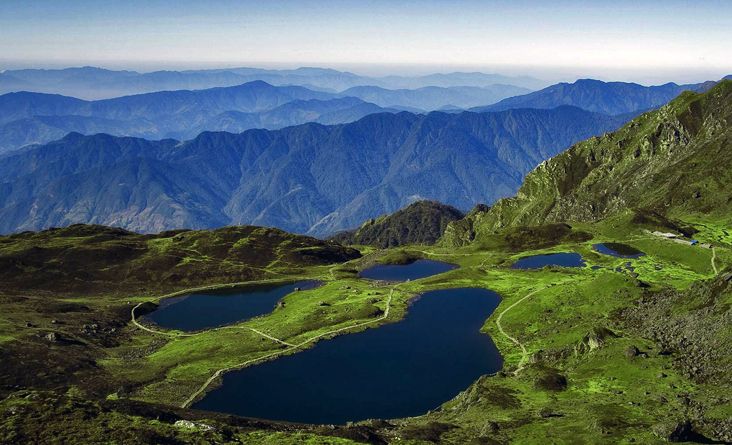
Pach Pokhari
Panch Pokhari is a beautiful and stunning place located in the Sindhupalchowk district, Nepal, at an elevation of about 4,100 meters. The very name means “Five Lakes.” This is a holy place for both Hindus and Buddhists: they believe that taking a dip in holy water drives evil from the soul. Pilgrims come especially during the ceremony Janai Purnima festival; hence, it finds the list of important yet remote pilgrim sites in Nepal. The lakes sit beneath the Himalaya Jugal range, far away from the modern evils of the world. Panch Pokhari possesses such magic in its seclusion.
The entire area surrounding Panch Pokhari comes under Langtang National Park, which itself is known for its biological diversity. The trek to the lakes leads one through thick forests, alpine pastures, and high ridges commanding extensive views. The wildlife inhabiting the area include musk deer and Himalayan monals, and red pandas. Such a pristine setting rekindles trekkers to communing with nature at its best. It enriches experiences with the culture of Tamang and Sherpa communities as well.
Panch Pokhari means five different lakes, out of which the largest is Surya Kunda. Each lake carries its own religious connotation and mythological significance with it. Ancient legends are associated with each of them. Stone shelters, small shrines, and fluttering prayer flags all around the lakes testify years of pilgrimage and worship. The lakes are frozen for much of the year, adding to their mystic appeal. Visiting this area seems to be stepping into a timeless sanctuary.
Significance of Panch Pokhari in Janai Purnima
Panch Pokhari, or Five Lakes, is possibly the Nepal’s most important pilgrimage place, especially during Janai Purnima, a full moon day submitted to this form of worship in August. For Hindus, this day means changing the sacred thread (janai) and performing purifying and protecting rituals. Thousands of pilgrims travel most arduously on these days and undertake this pilgrimage. Bathing an entire day in the five lakes is believed to wash away all sins, give good health, and bring the blessing of the deity for the coming year. These lakes are also visited by the shamans and spiritual seekers.
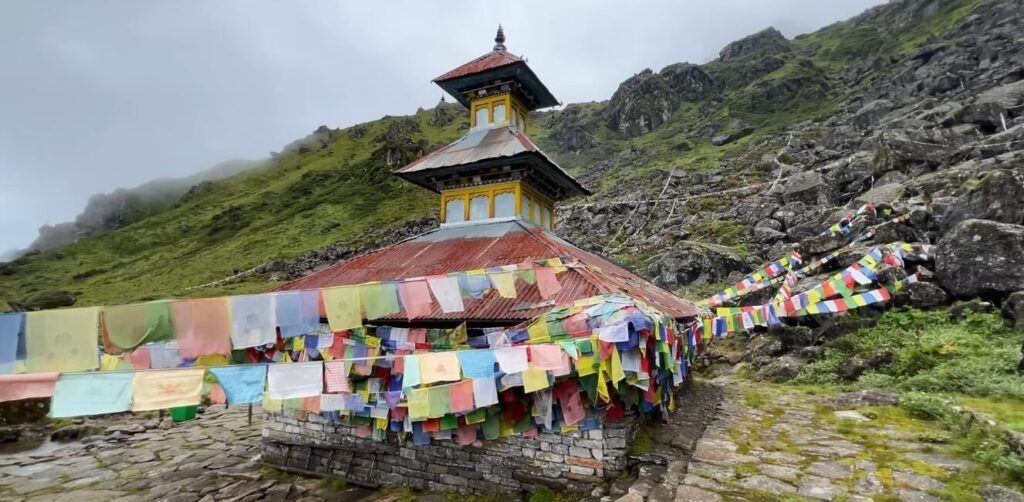
All the local legends add to the atmosphere of the five lakes’ mystique. A well-known myth says that when Lord Shiva lost his beloved Sati and went to find solitude, he struck his trident into the earth to make some water. It is said that the five lakes came out as a result of the act of that deity, making the place holy. Locals also believe the lakes have some protective virtue and they are home to guardian deities. It is traditionally respected by indigenous communities like the Tamang and Sherpa because of the tradition that in this area the spirits of the mountains are said to reside. For them, Janai Purnima is not simply a Hindu ritual, but also the moment when the divine energies of the Himalayas are most alive, rendering this place as one between where heaven touches the earth.
My Trekking Experience
Day 1: Kathmandu to Chautara
The drive from Kathmandu to Chautara, the district headquarters of Sindhupalchowk, began our journey. The road wound through terraced hillsides, little towns, and busy markets. Away from the capital, I began to feel the familiar peace of heading towards the mountains. A cool breeze in Chautara welcomed us in, followed by a lovely sunset that turned the hills to gold. That evening, we checked our gear and visualized what we were in for in the great days ahead.
Chautara lies about 1,400 meters above sea level and is ideal for acclimatization. It is quite basic, with some lodges and inns, yet is always rather busy with trekkers and locals. We met some shopkeepers who recounted tales of past trekkers who’d gone to Panch Pokhari. It was heartwarming to hear how the trail had left its impressions not just on the trekkers but also on the communities along its way. The thrill that night kept me awake.

Post-dinner, I took a little stroll through the narrow alleyways of Chautara. Children played outside, while the elderly men sat sipping tea, wrapped in shawls against the evening chill. The pace of rural life felt soothingly known. From afar, the strains of the Nepali song, “Phoolko Aankhama Phoolai Sansara,” drifted in from a radio, setting a very appropriate background score for the journey. That song was to stay with me throughout the trek.
Day 2: Chautara to Sano Okhareni
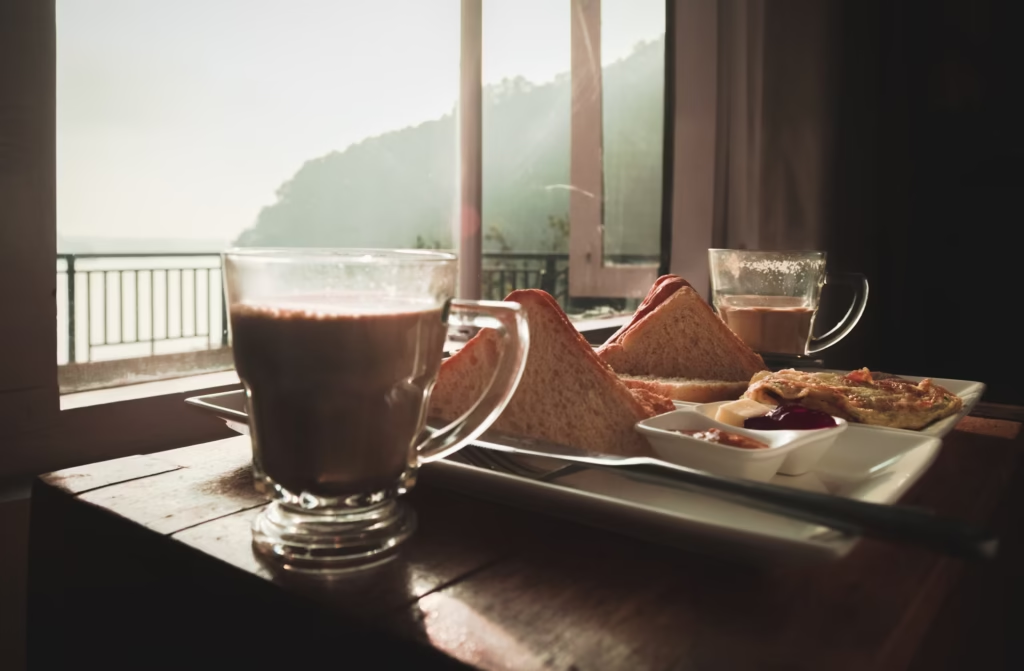
We started our hike very early in the morning on the way from chautara to Sano Okhareni. For a while, the trek was gentle as it wound its way through terraced fields where farmers had begun work early. Pine and rhododendron shaded us as the sun rose higher and higher. We passed a group of school children walking barefoot to emerging distant school-an humbling sight made every step on the trail count. By the time we reached Sano Okhareni, views became fabulous.
Gradual altitude gain helped make it easy for us to get into the trekking rhythm. Sano Okhareni had a very nice camping site engulfed in nature, deserted aside from the swaying trees and few calls of birds afar. Local villagers greeted a warm, inviting smile with their freshly brewed milk tea. Hear about their daily lives depending on the trekking seasons that fetch them additional income. The very fact that they might have little yet still shared with others was quite touching.
I spent the evening writing under stars in the canopy of the sky. The air was dry and crisp, with the night almost silent-perhaps meditative. It gave me space to think about why these remote places matter in a hurried life like ours. That night, I hummed “Yo Mann Ta Mero Nepali Ho,” full of pride in the things Nepal can offer to the world. “Sano Okhareni” makes one remember that this land is still beautiful and tough.
Day 3: Sano Okhareni to Kami Kharka
That morning air started to chill our bones as we left Sano Okhareni and headed for Kami Kharka. The trail gradually ascended into thick oak and rhododendron forests with a riot of colors, bicycling park trees enjoying the praise of all the chirps. We had to stop from time to time to listen and follow with our eyes for some sounds. Here we started to feel as if walking through a part of life, one that would soon breathe: into a weightier appreciation of Nepal’s ecology with every step closer.
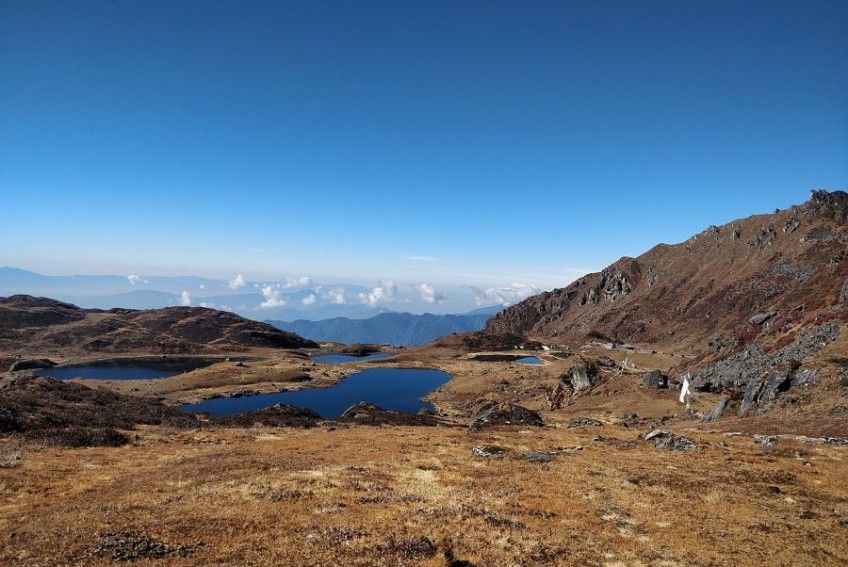
We took a slow pace so that we could get used to the increased altitude slowly. We met some of them-herders who herd their livestock-moving from pasture to pasture during the changing seasons. Kami Kharka is a big meadow used to graze domestic animals and for a temporary campsite. Open skies and silence make it a perfect place to rest. We put up tents, sat around a fire, and exchanged stories and laughter.
Of nights spent at Kami Kharka, this is perhaps the crescent heaviest I have seen. It was a soft light, almost within reach, to paint the landscape. As I sat and pondered on this journey, I felt lucky for such quiet company as the mountains offered. The silence was all-encompassing, with just a stilted hoot every once in a while. Nights like these remind me why trekking is more than a profession-it’s passion.
Day 4: Kami Kharka to Pauwa Bas
Right from the beginning, we woke up to a glorious morning, with the sunlight bathing everything in every corner and particularly filtering through the leaves on the trees. Our slightly steeper trek from Kami Kharka to Pauwa Bas now needed complete concentration and energy. As we rose, so did the diminishing air and the alpine scenery. The forest turned into open hillsides with low shrubbery and moss-covered rock. Worth every bit of effort because of the view.
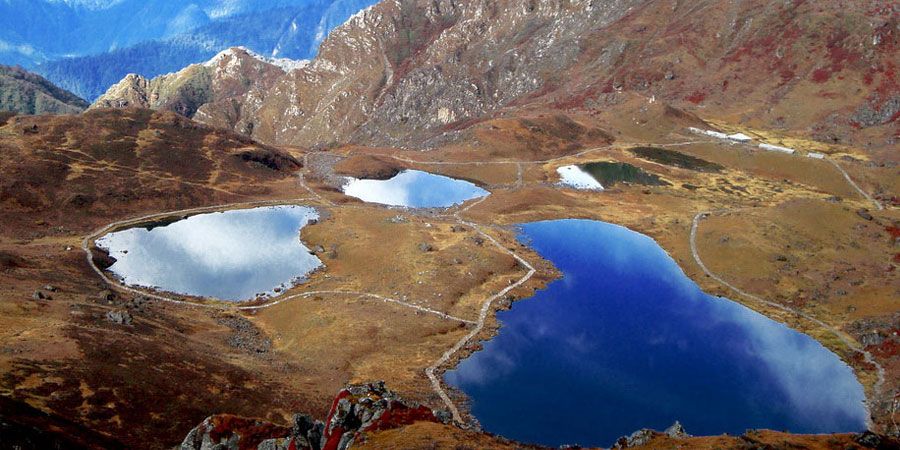
During breaks, we looked at faraway snows and stretched our legs. There was no sound but our boots and the wind rustling in trees in the serenity of the trail. Halfway we saw a tiny shrine where we lighted incense and offered our prayers for safe passage. Pauwa Bas appeared as a friend at the end of a long day. This was a simple campsite, but underneath huge cliffs, it was peaceful.
A local guide sang an old Tamang song by the fire that night. Its sound resonated marvelously with the mountains and its confined, clean, easy rhythm evoked memories of Nepal’s deep musical traditions. The song was that raw and unfiltered, resonating well with all of us. In this moment, the song, the mountains, and our bonding experience became sacred. As we huddled around the crackling fire, feeling like we weren’t just a group, but part of something larger.
Day 5: Pauwa Bas to Hile Bhanjyang
The journey began early on day five. We set out from Pauwa Bas with renewed energy. By the way, the first hill began an uphill slope via rocky paths which surely tested our endurance level. Our guide reminded us of the slow pace in deep breaths- really very useful advice on altitude. But sure enough, beyond the altitude, the mountain opened up from a view most Cessna pilots would envy in an unending panorama of the Jugal Himal range. To reach Hile Bhanjyang seemed an achievement.
Hile Bhanjyang is a high ridge at 3,400 meters above sea level that allows views of every side in grand panoramic style. We found an area to pitch up and see how the heavens would ‘dance’ once it got close to evening. Clouds rolled in like slow waves and receded. We met some of the Tamang herders who told us stories of how their ancestors used to walk on the same treks for centuries. It was quite a soulful connection with the land.
We then took our supper at night and sat around a campfire trading stories of the good old trekking days. There is something really magical about storytelling beneath the stars-all of the words hang a little heavier in that thin air. Someone played “Resham Firiri” on a flute.
Resham Firiri…,Resham Firiri
Udera Jaamki,Dadama Bhanjyang
Resham Firiri,
We all joined in softly, the notes echoing into the valley below. Music and mountains, I thought, always go hand in hand. We slept that night on full hearts and tired legs.
Day 6: Hile Bhanjyang to Nasimpati
Upon waking on Day 6, we made our way to Nasimpati, one of the last places before detailed entry into Panch Pokhari. The day chose to wander on high alpine terrain with fewer trees and more rocky outcrops. Prayer flags fluttered in the wind ahead, proclaiming the sacred ground. The climb was more leisurely, but the magnificence of scenery urged us on every second. It felt like stepping into a holy amphitheater sculptured by the Gods.
Nasimpati sits just shy of 3,800 meters and beneath the ridge leading to Panch Pokhari. It is a common halt for pilgrims and trekkers. We arrived there by mid-afternoon and rested and acclimatized while drinking tea and munching on biscuits with other travelers. There was a small stone shelter there, which was truly the wind’s merciful love. The place’s appeal and meaning went beyond physical description.
I spent my evening quietly, writing my journal and watching the sun disappear behind the peaks. Here, it was colder; but the heart felt warmer because of what it had been through. The stars begun to sparkle in the high-altitude sky: they were sharp and bright. That night, I would mumble to myself a line from a Nepali poem: “Yo jeevan ek yatra ho“. (This life is a journey). It never felt more true.
Day 7: Nasimpati to Panch Pokhari
The day for which we had all been waiting had finally come—the day for scaling Panch Pokhari. We rose before dawn, put on our warmest layers and headlamps, and hiked up to the trail. The air was eerily still save for the crunch of frost underfoot. Slowly but surely, we climbed over the last ridge that brought us face to face with the sacred lakes below. Mere words could not express what had been witnessed.
In the early morning light, the mountains Jugal shimmered with the rays of the sun over Panch Pokhari. The five lakes of shining, indigo, polished mirrors reflected the sky and prayer flags waving in the crisp mountain breezes. We walked a slow circle around Surya Kunda, the largest of them, step-for-step mindful and heavy with reverence. Here also, as pilgrims would pray, so did we; letting the moment sink so deep into our souls, what I felt was just an extremely powerful and intense stillness-it was as if time itself had paused.
For hours, we breathed that most sacred air, photographing and silent in capturing memories. Meditative sitting, some tears of wonder and gratitude, and pilgrimage as much as trekking-as much into somehow ancient and eternal. At that point, I tied a small prayer flag with my hopes and blessings for every future traveler. The strength of Panch Pokhari in serenity became part of me.
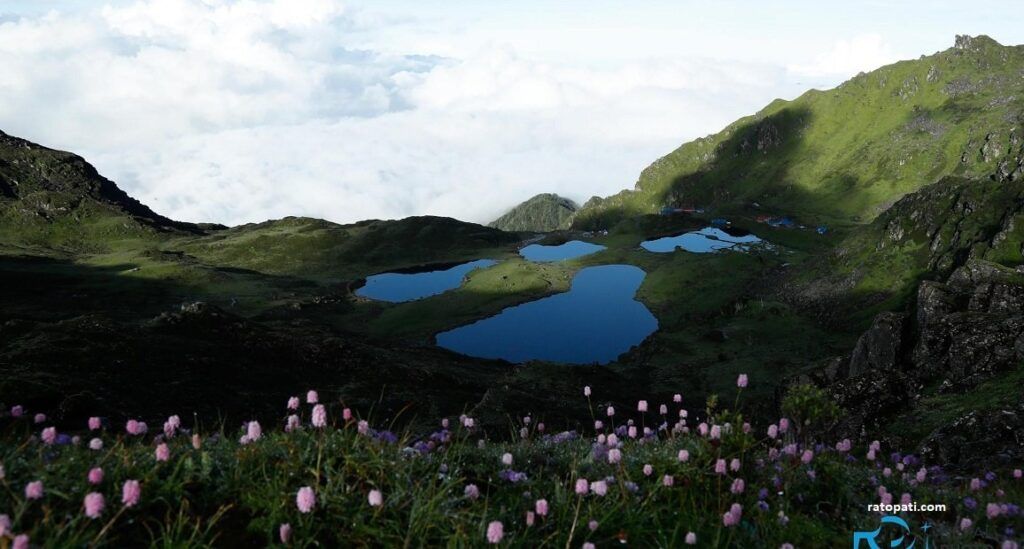
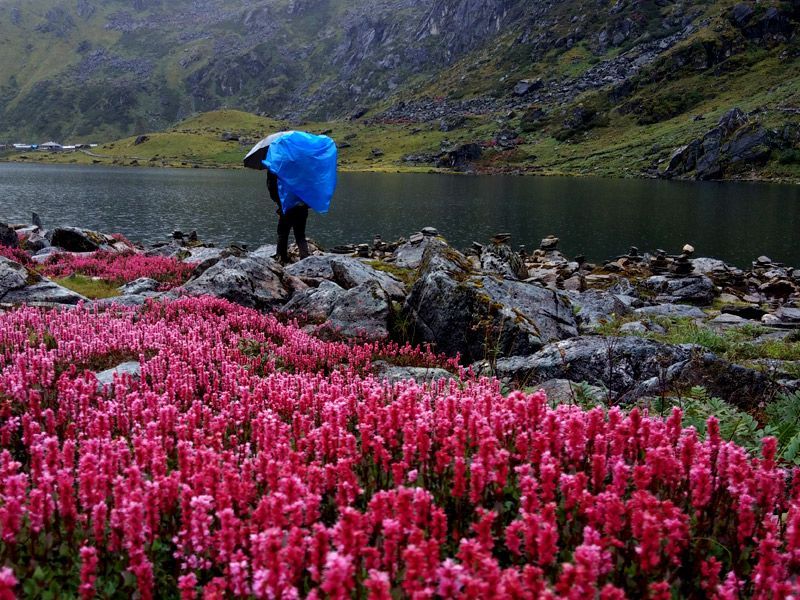
Day 8: Panch Pokhari to Nasimpati
Leaving Panch Pokhari was more painful than I had thought. And so we descended, our hearts weighed down while we paused every so often to steal glimpses at the now familiar lakes. The trail back to Nasimpati had definitely spilt a load off, yet it somehow still feels a little heavier-no-acquainted sound at all-as all of us has got a reflection going on. There was beauty behind me but now traveled with me in mountains. We were no longer the same people.
It was going to be really cold by the time we got to Nasimpati again, with clouds quickly rolling in. Stone shelter began to feel like the best option, and warm soup was the icing on the cake. The group felt much closer now, bonded by the magic experienced at the lakes. We spoke less now but those few words held so much meaning. It would be quiet tonight with the mountains humming a lullaby to put us into a deep, restful sleep.
This night had fewer stars hidden by mist, but the inner light from our journey was burning brighter than ever. I dreamt of the lakes-their waters are still, sacred; their emotions would linger long after the trek was over. As I closed my eyes, I silently recited another line: “As long as this heart beats, the Himalayas are with me.”
Day 9: Nasimpati to Kami Kharka
The descent from Nasimpati back to Kami Kharka turned out to be easy and somehow nostalgic. Except that the downhill walk was a little too much of an effort for the knees, it was excellent for the lungs. Similar rocky and windswept paths, now bathed in softer light, were retraced. Without the urgency of ascent, more began to be noticed: the texture of the moss underfoot, how mist twined and curled around the cliffs, and the change in birdsong ever so slightly as altitude dropped.
By the time we got to Kami Kharka, that meadow welcomed us like an old friend. We pitched our tent on the same patch of grass where we once shared stories beneath the stars. This time, there was a quiet sense of closure. The place now felt familiar, not just as a stopover but part and parcel of the journey’s fabric. That evening, we gathered around the fire once more, a little quieter but warm. We shared stories about favorite moments: something very nearly slipping on a snowy ridge; flute by the guide; lakes at sunrise, which looked like they were dreaming with the clouds. Each memory formed a stitch in the quilt of this shared experience.
Day 10: From Kami Kharka to Chautara
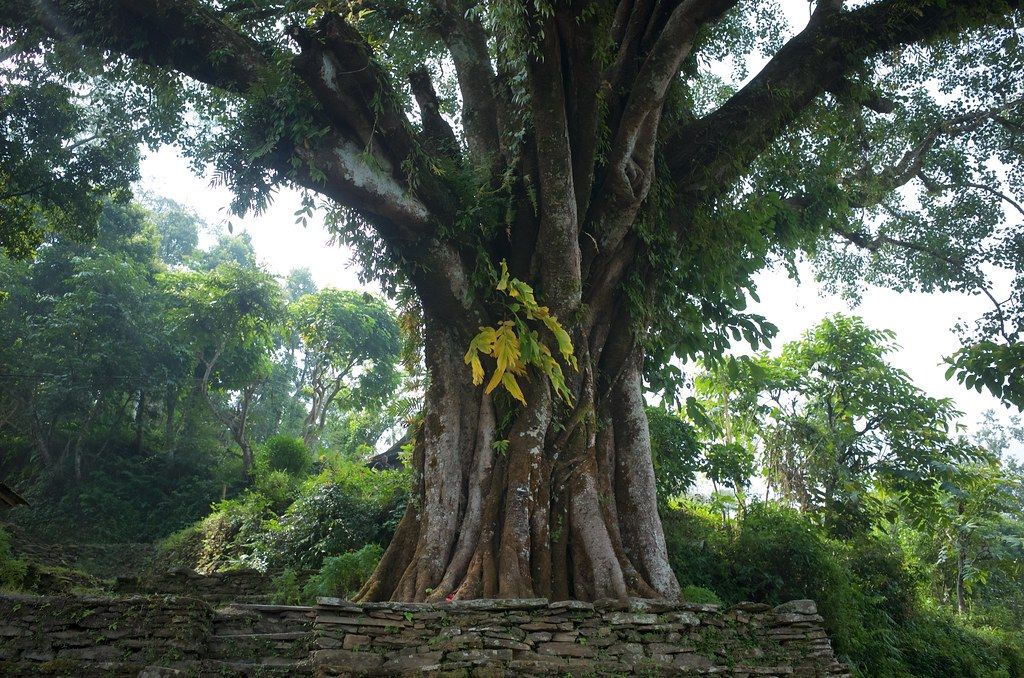
The final day of trekking was a conflux of emotions. It was homecoming joy tinged with the sadness that all good things must come to an end. We walked in easy, unhurried pace, soaking in the experience of our last stretch before returning to normal life. As we continued to descend, familiar trees and terraced fields, the same ones that heralded the beginning of the journey, came into view. Yet, everything looked entirely different: bright, deep, as if the mountains had bestowed on us entirely new vision.
It felt strange and familiar when Chautara first came into view: the dusty roads, the shopkeepers prattling off their bids, even the music streaming from a nearby tea stall-it all snapped back into the life rhythm. We let our bags down in relief and gratitude. Over the evening, we shared a plate of momo and steaming-tea-soaked moments of comfortable silence as we each processed the burden left on us by the experience.
I took another short walk through town that night, holding on to a low cloud-shrouded sky. A dog barked at a distance, the smell of firewood wafted in the air. My knees hurt, but my spirit soared. I passed by a wall smeared with a quote in Nepali: “Harek yatra ma ek antar yatra pani hunchha” (In every journey, there is also an inner journey). I smiled. It couldn’t be more true.
Recommendations for Future Trekkers
- Best Time to Go: The ideal seasons are spring (April–May) and autumn (September–November), when the skies are clear and trails are dry.
- Permits: You’ll need a TIMS card and Langtang National Park permit, both of which can be arranged in Kathmandu.
- Preparation: Acclimatization is key. Spend a day in Chautara and maintain a slow, steady pace as you gain altitude.
- What to Pack: Layers are essential, as temperatures vary wildly. Don’t forget a good sleeping bag, water purification tablets, and snacks like trail mix or energy bars.
- Respect Local Culture: Learn a few Nepali phrases, accept tea when it’s offered, and always ask before taking photos of people or shrines.
- Eco-Tips: Carry your trash out, use biodegradable soap, and support teahouses that practice sustainable tourism.
Final Reflections
It is not simply a trek to a high-lonesome lake; it is more everything in between, the laughter around fires, the huffing and puffing on steep ascents, and the contact with people who consider these hills their own. It’s about discovering, within yourself, the silence as the world grows boisterous.
The pilgrimage has not just left me with memories; it has imparted to me a refreshed purpose. I see hope in every prayer flag fluttering in the breeze; I feel heritage with every footfall on the ancient path. Panch Pokhari is not a mere destination; it is a mirror that reflects who you are and who you could become.
To all of you seeking the transformation rather than merely a trek, I say, go. May the mountains once again fulfill their old purpose: to humble, heal, and hold you.

